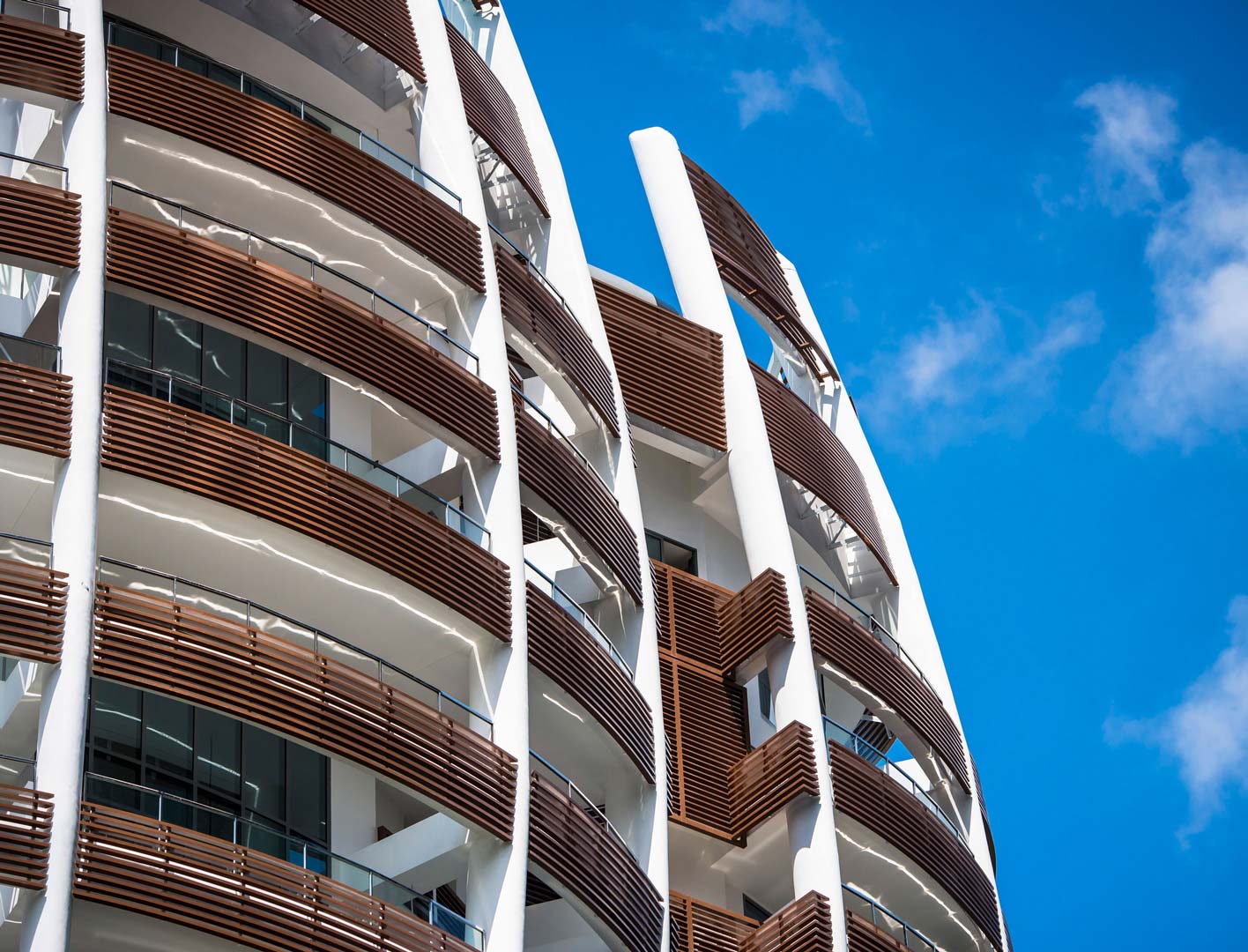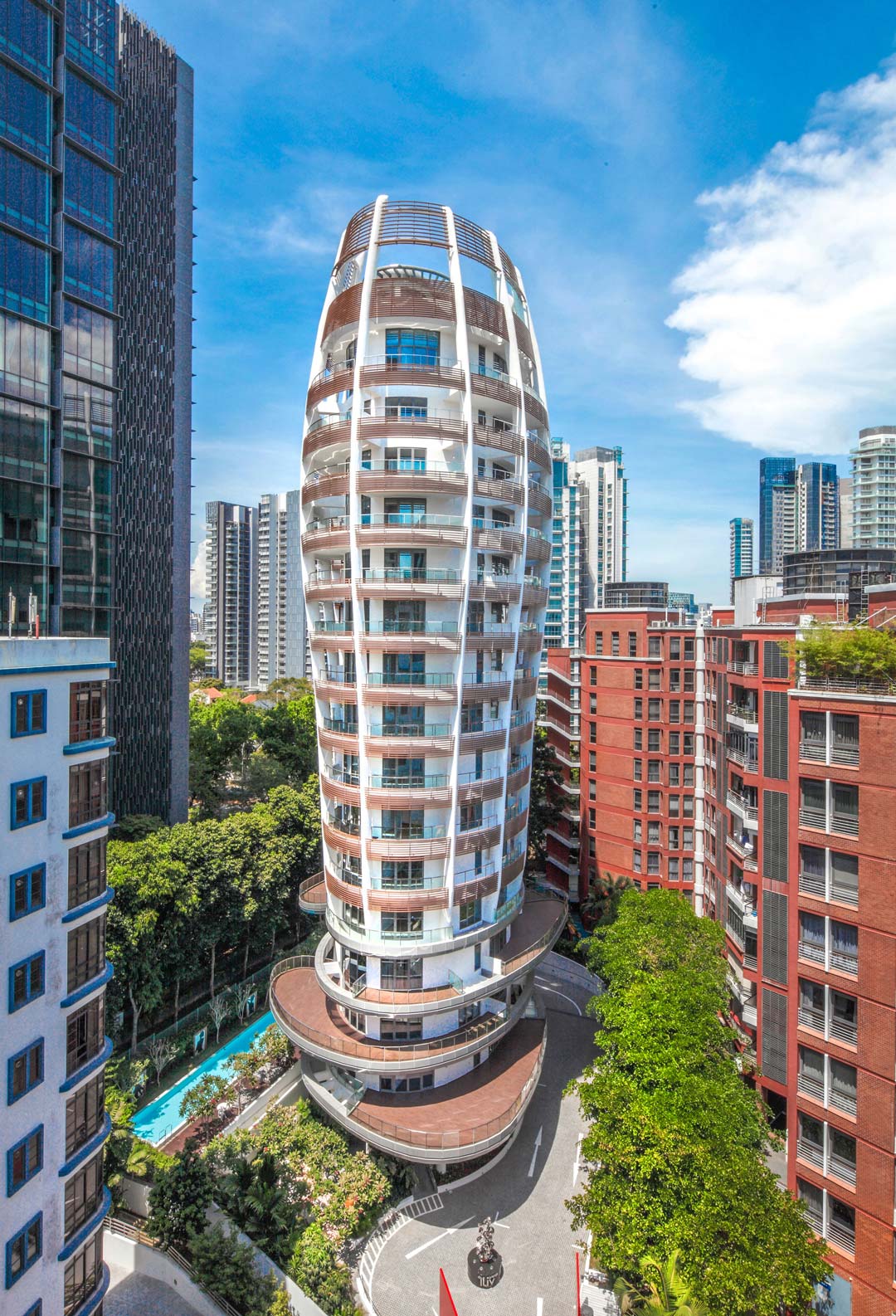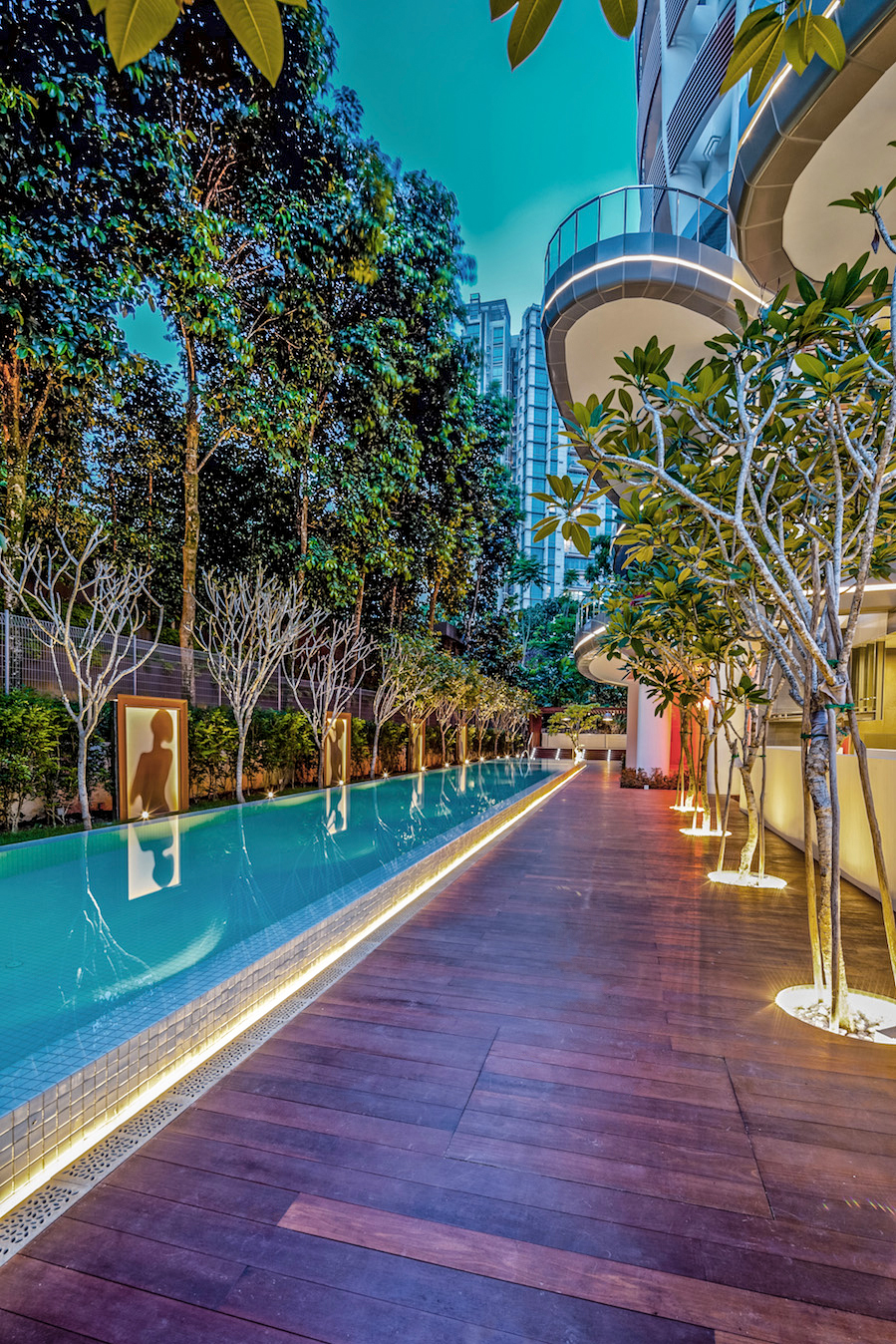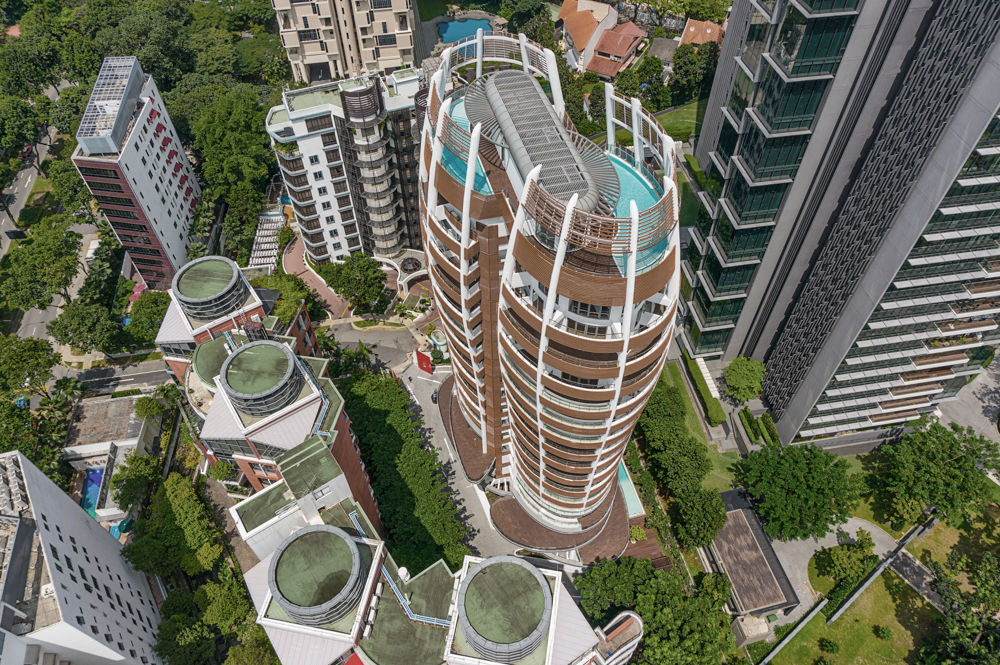ILIV @ GRANGE
Singapore
Standing 16 storeys tall on Grange Road, iLiv@Grange is a residential tower situated in Singapore’s prestigious Paterson Hill district. The area is characterised by its hilly topography, lush tropical gardens, and mature trees, creating a serene environment. Positioned between two taller structures, iLiv creates a sense of intimate, garden-connected living within an urban context.
Like most architecture, iLiv was shaped by constraints—an inherent challenge for any design project. MDL’s architects took over the design when the developer found that the proposed form of the structure did not align with the interior designs by Philippe Starck’s Yoo Studio. This prompted a reimagining of the building’s form to reflect the interior’s uniqueness, introducing a striking example of inside–out architecture.
The site, constrained by the height and proximity of its neighbouring towers, posed a dual challenge: to create a distinctive building that stood out yet harmonised with its context, remaining as a “good neighbour” and not drawing undue attention.
The compact nature of the site further raised the issue of maximising floor space. An increase in sellable space was requested, leading MDL to carve out an additional 20% through various creative means. However, this addition was comprised largely of bonus buildable gross floor area, which did not translate into additional living space. Consequently, this meant that apartments expanded in size, requiring a shift from one- and two-bedroom layouts to two- and three-bedroom configurations, respectively. This adjustment resulted in smaller bedrooms, mitigated somewhat by the curvature of the tower’s form, which visually expands the internal space.
Although marketing later stated that the building’s form was inspired by the calla lily, the design was more directly influenced by the human figure, suggesting the shape of Henri Matisse’s “Blue Nude.” The resulting intersecting duo of elliptical fuses form an intriguing visual puzzle that, in keeping with MDL’s design philosophy, may symbolise infinity or the number eight—an auspicious symbol in Chinese culture. The building’s curvilinear, sculptural form, with its sensual and volumetric qualities, balances the scale of its surroundings, ensuring that it complements its neighbours rather than competing with them.
The organic shape of the building ensures that each floorplate is unique. One elliptical stack contains maisonettes with two bedrooms and a double-height living or dining area, while the second stack offers a mix of three-bedroom and studio apartments. iLiv also has two double-height penthouses, each with its own distinctive curving pool. The apartments range in size from approximately 102 to 279 square metres, while the penthouses are notably larger, measuring 306 and 325 square metres.
The elliptical floorplans have consistent core perimeters, but the external perimeters—defined by the balconies and their planters—vary significantly, expanding initially and tapering sharply towards the top floors. The building’s voluptuous form is accentuated by expressive curved ribs that guide the eye upwards towards iLiv’s gently folding roofline. In contrast to these vertical elements, a horizontal lattice of brown louvres provides both a shelter from the sun as well as privacy, uniting the façade while reinforcing the building’s distinctive shape.
Adding to the tower’s sensual form, the lower three storeys surge in and out, cantilevering as far as 6 metres and creating a dramatic canopy for the porte cochère. From within, these apron-like forms frame the views, while balcony planters evoke the feeling of living in a house surrounded by trees.
True to MDL’s design philosophy, iLiv@Grange exhibits a seamless unity between interior and exterior forms. The dynamic sensuality of the external architecture is carried through into the interiors, maintaining visual stimulation throughout. The building’s sculptural presence is defined by a balance of vertical, horizontal, and curvilinear elements, a coherence further emphasised by a commissioned sculpture at the entrance, developed through Metakaos, MDL’s artistic arm. This integration of art and architecture marks a significant moment in the evolution of MDL’s practice, where design, art, and architecture converge as a unified creative force.
LOCATION
Singapore
CLIENT
Heeton Realty Pte Ltd
TYPE
Residential
SIZE
3,965 sqm
YEAR OF COMPLETION
2013




